Find out why your files were encrypted or locked and the options available to you to decryption the ransomware.
Immediate Ransomware Help
Don’t let ransomware hold your business hostage. Our experts are ready to recover your data and secure your systems.
We know how overwhelming it can be to be the victim of a ransomware attack and how it affects your business, which will be unable to operate due to encrypted or locked files.
This page will provide you with information on why your files have been encrypted or locked and the options available to you to decrypt the Ransomware.
As a ransomware recovery service provider, HelpRansomware has already helped thousands of customers successfully decrypt and recover their data.
Although DIY is not recommended in these cases, our goal is to give you some essential tools with which you can try to successfully recover your files – this guide describes the steps required to decrypt or unlock files from a ransomware attack.
You are the victim of a ransomware attack
You get to work and start noticing suspicious alerts from your servers, and none of the databases are working; your co-workers are frantic and can’t access any of their data.
You investigate and find that all the files on your network have been renamed, and you find ransom demands and a screen asking you to send an email to a given address if you want your data back.
Put two and two together, and you realize you are the victim of a ransomware attack.
3 common ways your files get encrypted or locked
Ransomware is successful when companies have poor security care.
Organizations that lack data security policies and procedures will have an increased risk of ransomware attacks.
Here are some of the most common ways to fall victim to a ransomware attack.
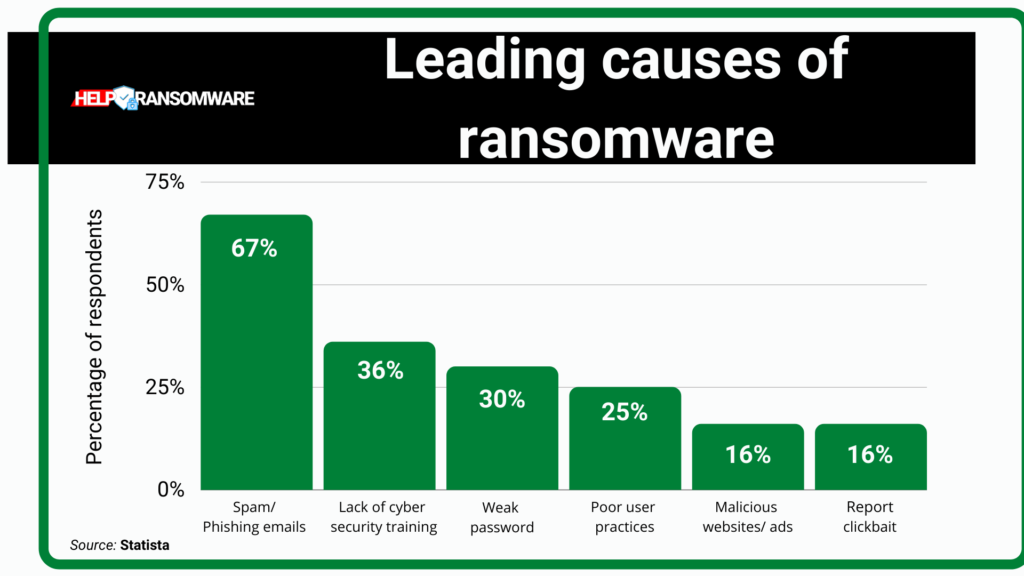
Open Remote Desktop Protocol Ports (RDP)
Companies that have improperly configured network security can leave the Remote Desktop Protocol (RDP) ports open.
It’s equivalent to leaving the front door open when you leave the house, it allows cyberattacks the opportunity to penetrate with little deterrence.
Once a hacker connects to your network, they can install other Ransomware and backdoors to access your network at a later time.
Many ransomware attacks still use this attack method because so many organizations are unaware of this security vulnerability.
Close the RDP port on your endpoints and servers before it’s too late.
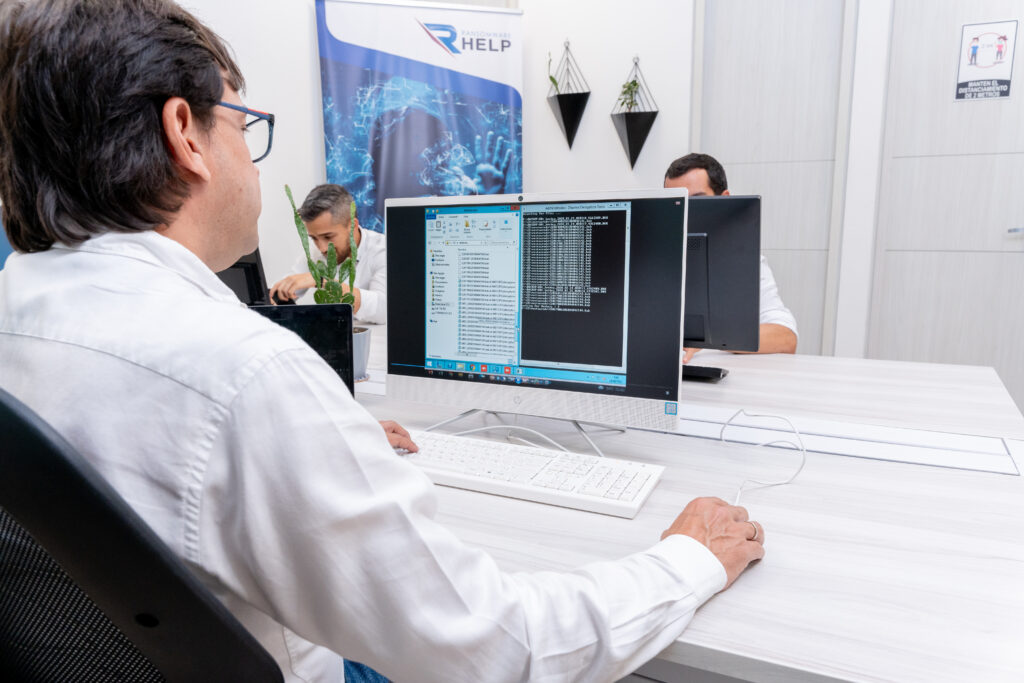
Fast & Guaranteed Recovery
HelpRansomware provides a 100% guaranteed ransomware removal and data recovery service, with 24/7 worldwide assistance.
Phishing attacks
Ransomware can infiltrate the network by spreading malicious email known as a phishing attack.
Ransomware operators use vast networks of internet-connected devices (botnets) to send phishing emails to unsuspecting victims.
These emails are intended to trick the recipient into clicking on a malicious attachment or link, installing the ransomware virus or other malware.
Phishing emails are becoming increasingly difficult to detect as cybercriminals rely on social engineering and find clever ways to make a malicious email appear legitimate.
It underscores the importance of investing in security awareness training for all organization members, not just the IT department.
Compromised passwords
Ransomware operators may use passwords previously used by employees in your organization to gain unauthorized access to networks.

Fast & Guaranteed Recovery
HelpRansomware provides a 100% guaranteed ransomware removal and data recovery service, with 24/7 worldwide assistance.
This stems from poor security practices that involve reusing the same passwords for multiple accounts and authentication processes.
If your employees used outdated and weak passwords to access corporate data, a cybercriminal can use a password earlier to initiate the attack.
Remember to always follow a good password cleaning.
4 Options for Ransomware Recovery
However, the variety of attack vectors underscores the importance of a digital forensic investigation that can help victims understand how the ransomware got to your computer and what steps you can take to remedy the vulnerability.
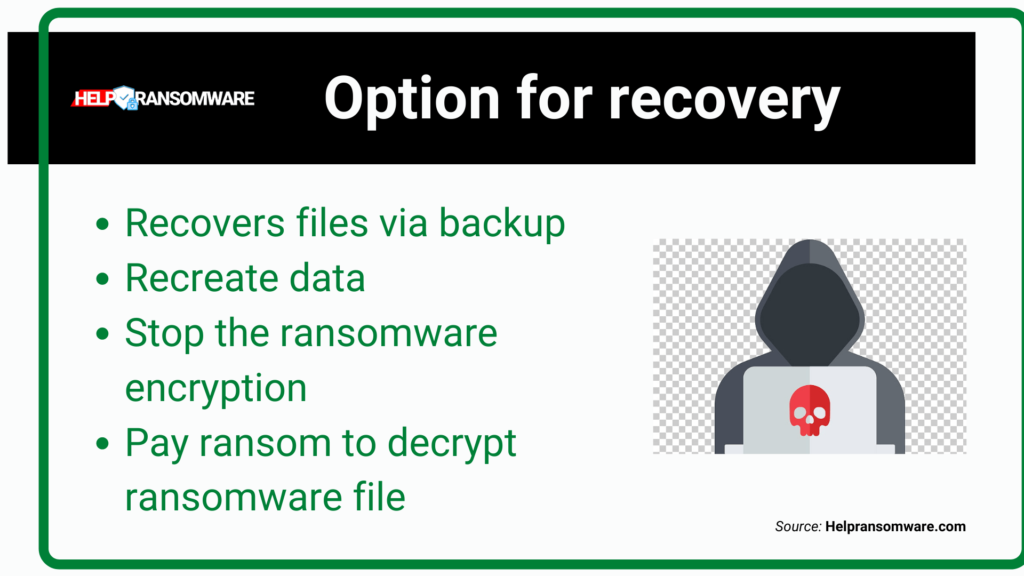
1. Retrieve files with a backup
If you wish ransomware decryption, check (in that order) if you have backups to restore and recover.
- Off-site or offline backup. Having the backup stored in the cloud or offline would protect the data from the virus as it would not be accessible at the time of the attack;
- Check your Windows shadow copies. While most ransomware will delete Windows shadow copies, you may be lucky and find them intact;
- Check your backups on site. In fact, most of the data on site is often deleted manually by the attacker or encrypted by the ransomware virus.
2. Recreate the data
Even if your files have been encrypted by ransomware, you may be able to recreate the data from a variety of sources as described below:
- Recreate data from hard copies. It may seem obvious to you, but this system is almost infallible. When you have physical copies of your data, you can manually reenter the data from hard copies on your computers and servers;
- Put the data together from the email. Email exchanges are a great way to save some data from email attachments;
- Database mining. Some variants of ransomware encrypt only a small portion of a database or backup file so that valid and usable data can be extracted.
3. Stop ransomware encryption
The hard truth is that most ransomware encryption is indestructible, despite the huge technological advances in our society.
The problem is simple: for every solution they find, ransomware creators find dozens of other loopholes they can walk through without getting caught.
Does this mean that you should avoid reading this paragraph?
Obviously not: trying to figure out how to stop ransomware encryption is an option that should always be explored, especially when you approach a ransomware recovery company like HelpRansomware, although the final choice is always yours alone.
While it tends to be rare, there are poorly constructed ransomware ciphers that have been breached by security researchers.
If this can save you from paying a ransom, you should try at all costs.
Indeed, there can be flaws in malware or weaknesses in encryption – companies need to look into these options, especially if time is on their side.
There are also free ransomware decryption tools that provide tools for previously decrypted ransomware variants, we have brought you a long list here.

Fast & Guaranteed Recovery
HelpRansomware provides a 100% guaranteed ransomware removal and data recovery service, with 24/7 worldwide assistance.
4. Pay the ransom to decrypt the ransomware files
If the encryption is too strong, the only way to get the decryption key for your files is to pay the ransom.
Many ransomware victims have no time to waste as they face severe losses due to business interruption, for this reason, your task will be to perform a ransomware decryption.
Every minute that goes by could be a lost customer or worse for a medical organization.
Here is a list of the most popular variants of ransomware known to be “cryptographically secure”, that is, with unbreakable encryption:
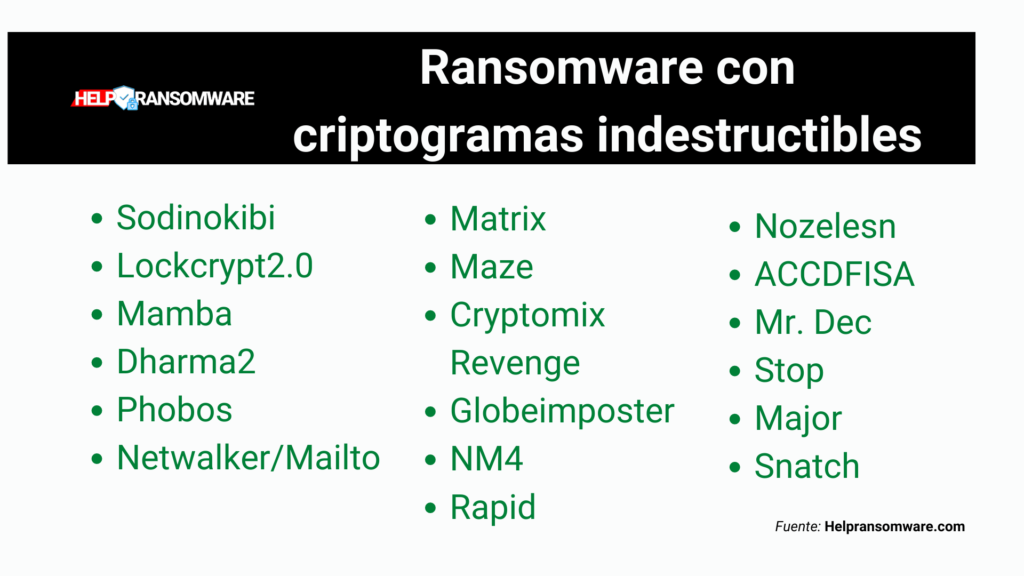
Lockcrypt 2.0
Mamba
Netwalker / Mailto
Matrix
Maze
Cryptomix Revenge
NM4
Rapid
Nozelesn
ACCDFISA
Mr. Dec
Major
Snatch
There are, however, companies and individuals who have the option of choosing not to pay the ransom.
If paying the ransom is the only option, you should understand the pros and cons that it entails before considering moving forward.
Why can’t most ransomware encryption be cracked?
Ransomware is a cryptovirus that uses encryption in combination with malware to lock your files.
Modern cryptography uses sophisticated algorithms and secret keys to encrypt and decrypt data.
Considering the power of today’s devices, it could take years to find the access to advanced forms of encryption.
Encryption is a security tool created to protect data; it is a defensive tool to provide security, privacy, and authentication.
Unfortunately, ransomware attackers are using it as a weapon against innocent victims.
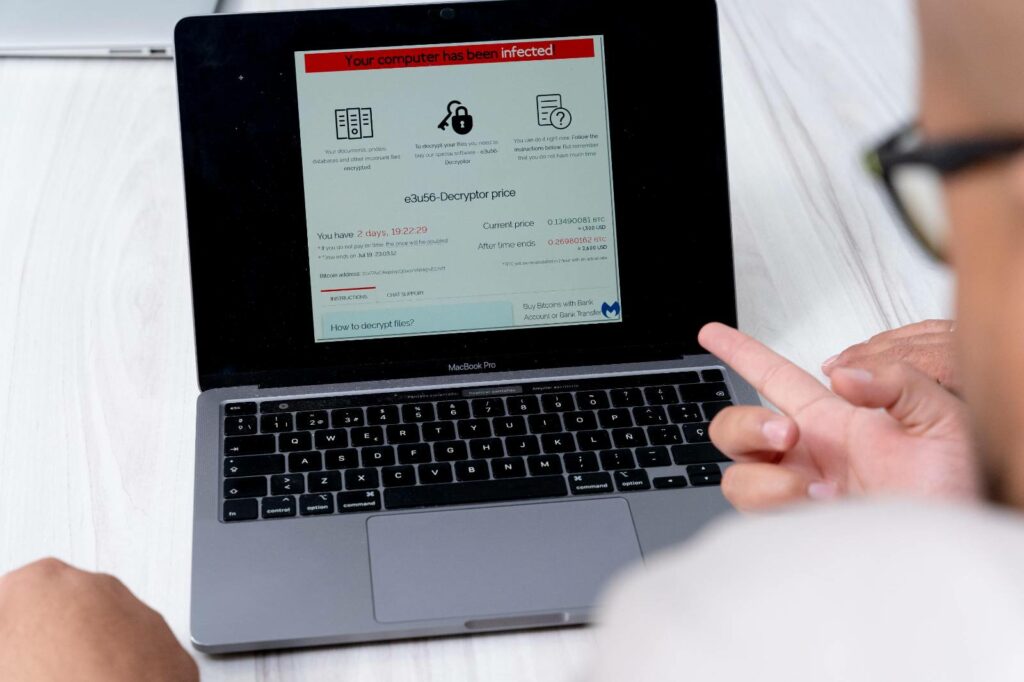
Immediate Ransomware Help
Don’t let ransomware hold your business hostage. Our experts are ready to recover your data and secure your systems.
How do I know if the encryption can be breached?
To do ransomware decryption, you can start with a free ransomware identification resource to determine the feasibility of decryption.
You will need to upload the ransom note and a sample file to the ID-Ransomware website, and this will tell you if a free decrypter is available or if it is an unknown ransomware variant.
Keep in mind that the tool is not always 100% accurate.
If the variant is still being investigated, it will need a malware or encryption analyst to determine whether or not there is a possibility of decryption.
Encryption is designed to be indestructible, which is why security researchers cannot simply create a ransomware decryption tool.
These impregnable cryptographs protect our bank accounts, trade secrets, government data, and mobile communications, among other things – it would be a significant security concern if there were a generic decryption tool capable of breaking encryption algorithms.
How a ransomware recovery specialist can help
If you decide to go to a ransomware recovery company, you must ask yourself how they will recover your data.
HelpRansomware provides you with all this information right from the first approach: visit our page to get a clear idea of how our experts work.
Ask the right questions to ensure a transparent experience:
- How is it recovering my locked/encrypted data?
- How much will the ransomware restore cost?
- Do you have experience with this variant?
A ransomware recovery specialist can analyze your current situation and determine what options are available at the time of the request.
A knowledgeable and experienced ransomware recovery company should be able to provide several services:
- Understand the ransomware variant and explain to the customer what to expect;
- Analyze malware to determine if encryption can be breached;
- Understand what was the vector that caused the attack and act with preventive methods;
- Have an updated sanctions compliance program that checks the bitcoin wallet for links with already sanctioned entities;
- Possess readily available digital currency to facilitate the payment of the ransom;
- Modify broken or malfunctioning decryption programs that cause delays in decrypting files;
- Repair damaged databases or files.
Understanding how your files were affected by the ransomware in the first place will give you the information you need to prevent another attack.
Whether you choose HelpRansomware or another company to decrypt your ransomware files, it’s essential what unknowns they might be waiting for.
Our experts have years of experience and thousands of cases behind them. They can undoubtedly enable you to make informed decisions about restoring your data after a ransomware attack.
If you need a company with such experience, HelpRansomware is ready to help you 24/7.

Immediate Ransomware Help
Don’t let ransomware hold your business hostage. Our experts are ready to recover your data and secure your systems.




